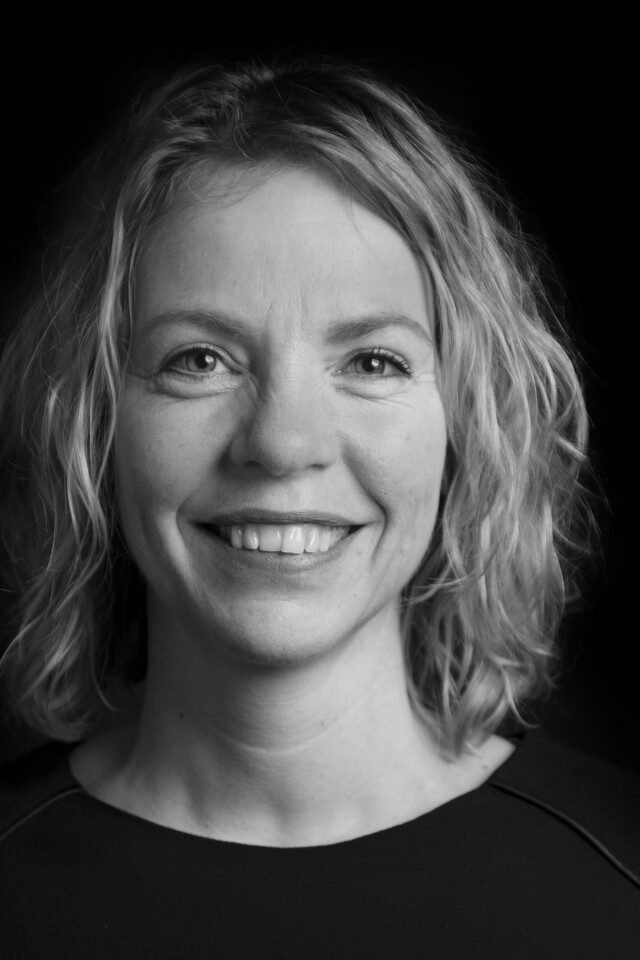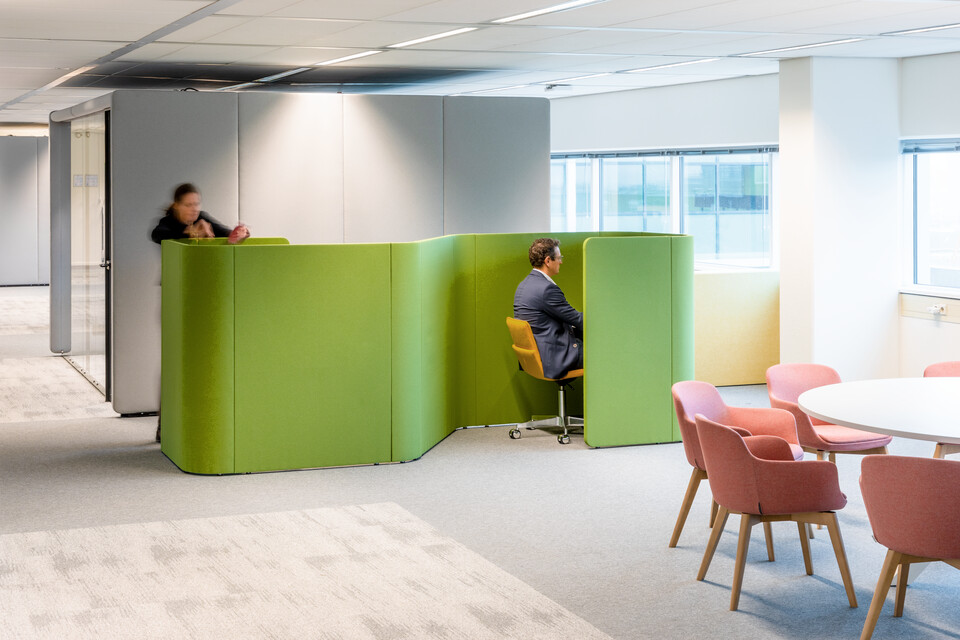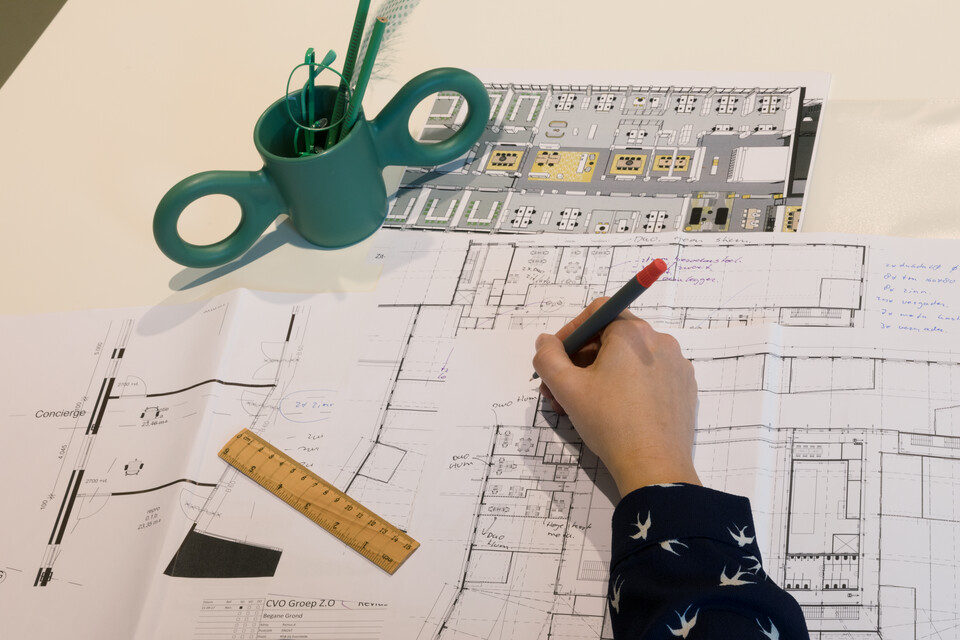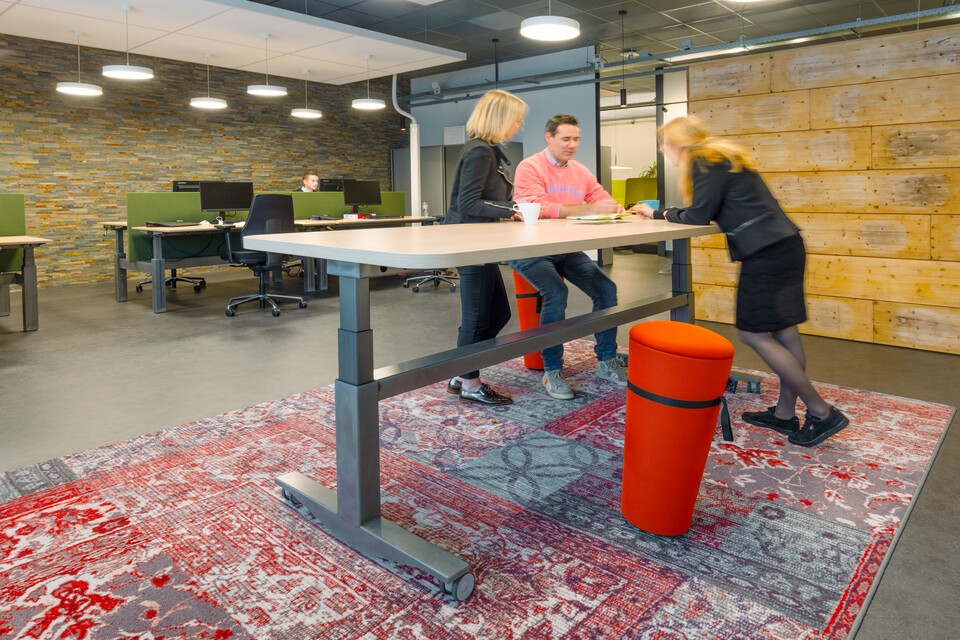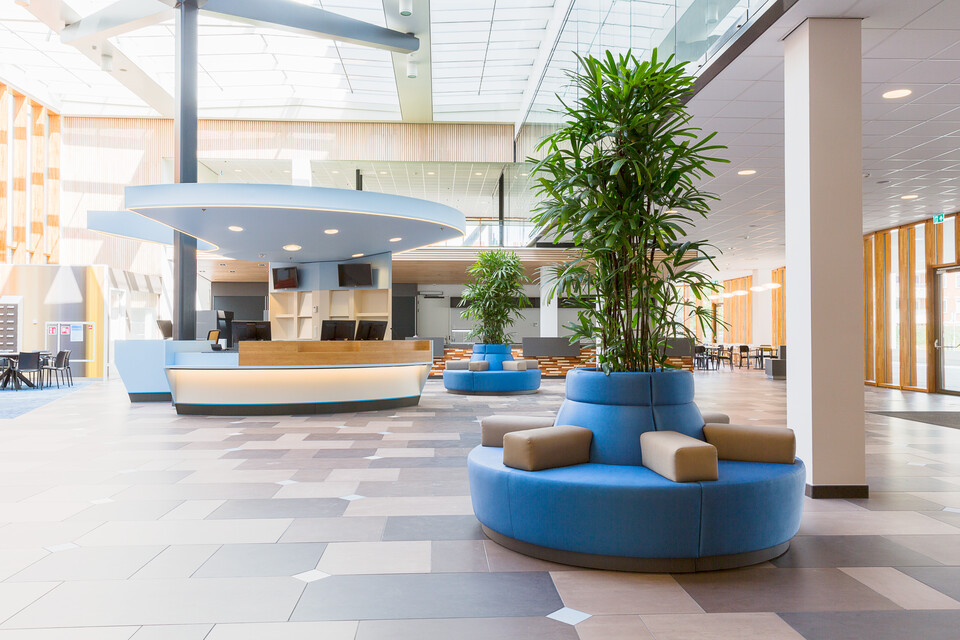Winkelwagen
Evidence-based furnishing
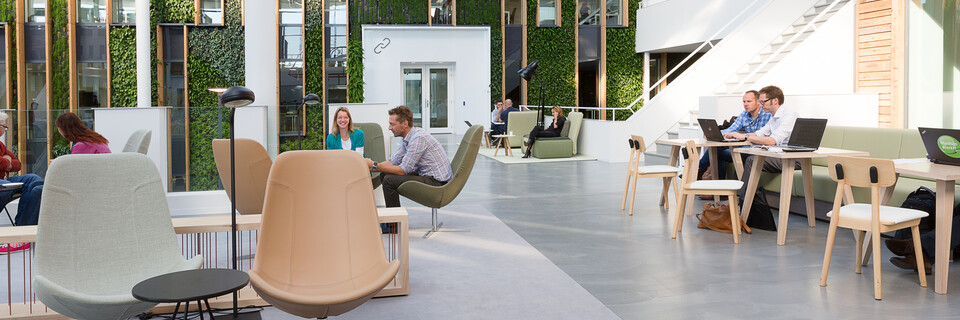
How you reside, live, work… Environments affect people. Many studies have demonstrated this in recent years. Lower staff absenteeism at the office? More satisfied employees? Opt for evidence-based furnishing, in which you make use of facts that are based on research. Carola van de Bilt, interior architect, will explain things further.
Furnishing advice
We live in a world of constant change, both society-wise and in the way we work. As interior decorators, we see the trends, market shifts and even larger changes up close. What we learn we pass on to our clients in the form of advice and suggestions.
'I always say: I have the best job in the world'
'Evidence based',
where does this term come from?
For me personally, it started with an analysis of the term ‘experience’. What does it actually mean to experience something? I suddenly had even more questions to answer, because each individual experiences things differently. What experience do you wish to pass on?
In my quest I encountered the environmental psychology of ‘evidence-based furnishing’ – a design methodology based on reliable knowledge from scientific research or experience. Now for the real question: in what way do certain environments affect people (and the other way round).
A building is much more than just an architect’s vision. Even more important is the question of how you would optimally support the users of a building. What are their needs? In what kind of environment do they feel at ease and perform at their best? At Gispen we call that ‘A Better Life At Work’.
Tell us a bit more about Life At Work
Life at Work is Gispen’s furnishing philosophy. We apply this philosophy whenever a question needs answering, and we have done so for many years. From a new set of cabinets up until a complete new interior. Gispen starts by looking at the working processes of the employees, which we analyse until we know who they are, what they do and with whom, where and for how long. We then figure out the best place for the activities to take place within the workplace. Finally, we ask ourselves in what type of place the people would come up with the best possible results.
This is how we create environments where people are happier, more productive and more efficient. In other words: ‘A Better Life At Work’. Putting people in first place is also an important feature of The New Way of Working, in which we are making more and more use of facts (evidence) from environmental psychology and other studies.
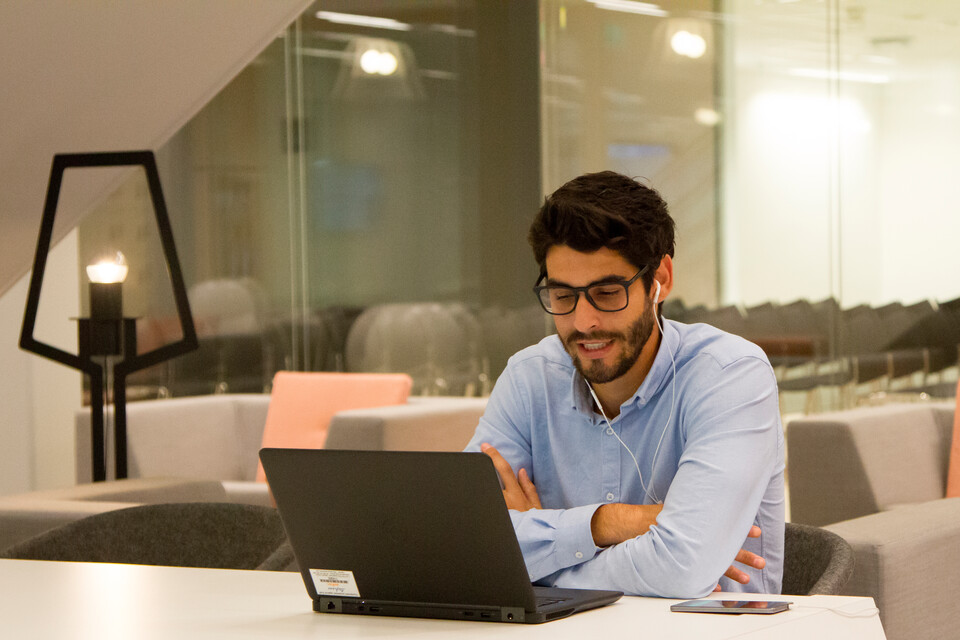
Background information
MET: Metabolic Equivalent
There has been a lot of research into the importance of motion and staying in motion. Sitting for long periods of time is bad for your health. According to the RIVM Lifestyle Monitor, the average Dutch person sits 8.7 hours a day, nearly an hour longer than what scientists recommend as a maximum. Even a little daily exercise can improve a person’s health substantially. Scientists from Taiwan have proven that the first 15 minutes of exercise are most effective. So grab your bicycle, walk up and down the stairs, take a walk around the office. If an office worker exercises an extra 15 minutes a day, the chance of an early death will be reduced by 14 percent.
Health gains can also be accomplished by varying posture. A Canadian study with 16.000 adult participants proved that if inactive people would stand for a quarter of the time they would normally sit, the chance of an early death would be reduced by 20 percent (a standing table, standing desk or sit/stand-conference table would be ideal in this case).
The codename is MET: the metabolic equivalent of a task. A physiological measure expressing the energy cost of physical activities per hour.
- Watching TV while lying on the couch costs 1 MET
- Jogging at slow pace 7 MET
- Chopping wood 17.5 MET
- A walk around the office 3.5 MET
- Walking up the stairs 8 MET, back down again 3.5 MET
Will evidence-based furnishing
take over the future?
I can’t be sure it will, but I do see change on the horizon. When I was in art school, we hardly ever discussed how environments affect people. We were mostly busy creating beautiful environments. As aesthetically pleasing as we could muster.
Nowadays, we know a lot more about where people feel at ease. A lot of research has gone into that, you can even put things along a scale. In turn, we can put those research findings into good use at work.
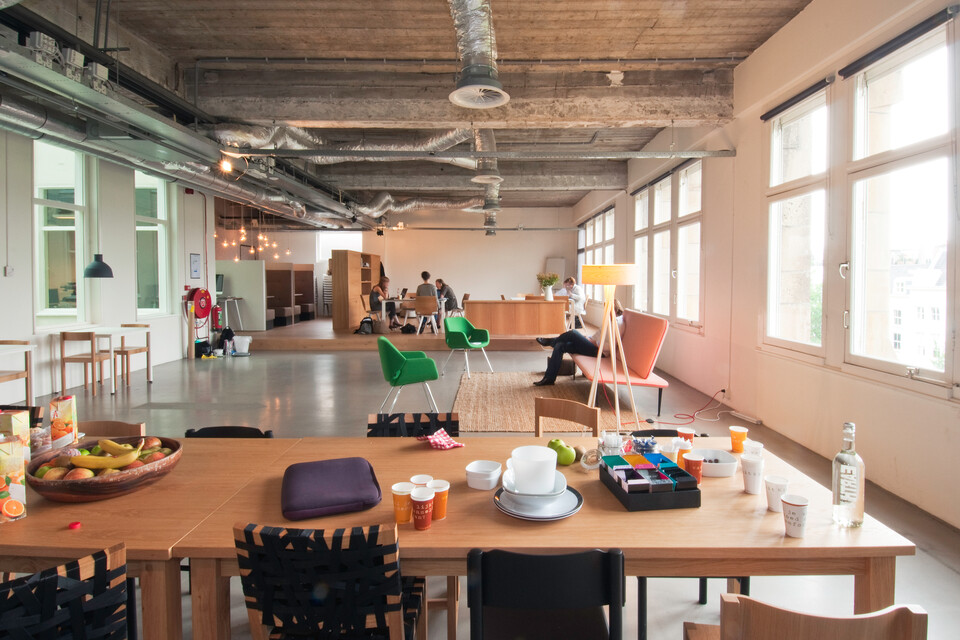
We have seen a lot more of the ‘open office’ recently. What impact does this have?
As a result of working in open areas we interact more with other people. We used to sit in our own offices, together with a handful of colleagues at most. That room, however, could be adapted to your own needs, something not so simple when working in an open area.
Nowadays, employees are given responsibility for their own work and they are assessed on output instead of attendance. It is therefore imperative that their work environment supports them in achieving their goals.
Are you unable to concentrate in an open space? Then something needs to happen, otherwise you will be left out in the cold. It becomes a problem when people are unable to produce what is expected of them. We must therefore create environments where different people feel happy and can get the most out of themselves.
What does that mean for you as a designer?
As a designer you can’t just act on your own experience. We perceive things differently. People are different.
Knowing how colours and shapes influence people is essential. Another example would be the distance between people sitting opposite at a table. The more you become aware of these things, the less likely you are to accept an environment that only looks good. This is something I come across more often these days when I visit clients. They are also becoming more aware.
In what way have clients become more aware?
Take the healthcare sector, for example, where people opted purely for functional furniture, and where colours such as apple green and bright orange were often used. And I thought to myself: “my god just look at that chair, it might be functional but that certainly doesn’t make it more appealing.” Nowadays, the so-called healing environment has become more important.
Research has shown that people recover more quickly in an environment where they feel safe and at ease. People do not come to hospital for fun; they would appreciate a friendly-looking, warm and safe environment. But functionality must of course not be forgotten: the furniture must be hygienic, sturdy and stable and easy to clean. Striking the right balance is key here.
Clients are also becoming more aware of this. They keep up with the latest trends and developments in their own branches, they read more and don’t assume that everything they are told is true. This is something positive; coming up with the best possible (healthcare) environments together. Being actual conversation partners who can learn from each other. This is what gets me excited. This is a good example of a big change I have encountered in the market.
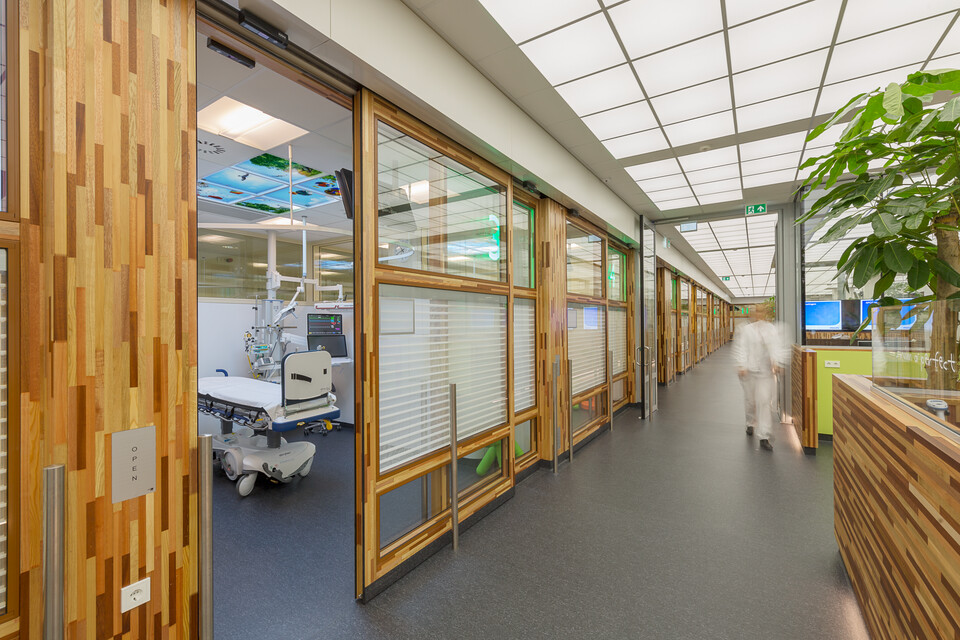
Can this also be traced back to the final result?
In the environment I mean?
Certainly! After all, it’s their environment. The more information our clients pass on about what they think, feel and experience, the better we will be able to follow up on that. This is why I believe that the connection is so important and why I’m not a big fan of the increasing tendering of projects.
You can derive a lot of information from four sheets of A4, but a design will become so much better if you interact with one another! Designs improve when there is personal contact, if you go over things together and think from different perspectives. For me people always come first, and not only in terms of the design but also in the processes that precede it.
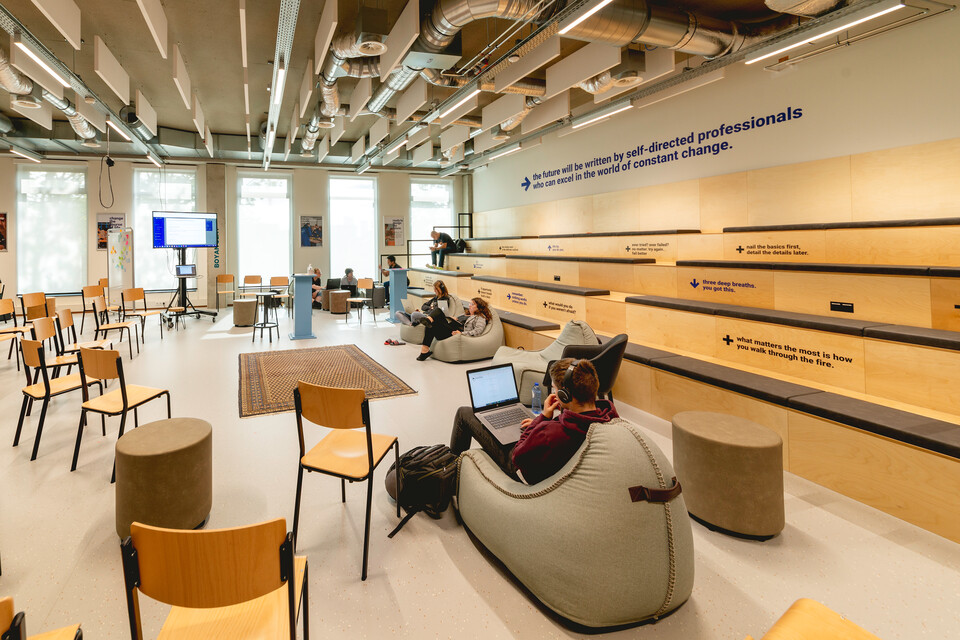
On a final note
Is there something you would like to share about working according to health and safety principles?
There are many different ways one can work in a healthier way. A non -height-adjustable desk of recycled wood, for instance. There will be no issues as long as people don’t sit at it for over two hours and if they stay in motion, move about a bit in the office.
Not a problem, just have them work at that desk. When I look at young people in learning environments and the way they move… lying on a beanbag, sitting on the stairs, working together more often than individually. If that stimulates the mind and leads to good results, fine! If you don’t need fully-fledged ergonomic tables with matching desk chairs to achieve that, then don’t bother.
Do you have any advice for our clients?
Don’t copy proven success.
Organisations often look at what others are doing and blindly copy what they think would work for them. I believe that every environment is unique and must come into existence through the working processes of the people working there. If you make a good analysis of that, you are working evidence based. Dare to take the people and their working processes as your starting point because that is what your organisation really is. Go by your own strength and dare to be authentic.
More to read
-
![FMHaaglanden FMHaaglanden headerm]() Blog
BlogACOUSTICS
Clever solutions with a positive effect
-
![Interieurontwerp, Projectmanagement Gispen service interior design 00A6980]()
Interior design
Would you like to receive our input on a new or renewed interior? Gispen will be happy to oblige!
-
![Arla Foods Gispen office project Arla Foods in Nijkerk 00A3804]() Blog
BlogWhat does Scrum require of your office furnishing?
Our interior designer Rob Lotstra will explain by answering 7 questions.
-
![Reinier de Graaf Reinier de Graaf landscapem]() Blog
BlogEnvironmental Psychology
What does it really mean? Interior architect Nelleke Lagerwerf presents her point of view in in this interview.
